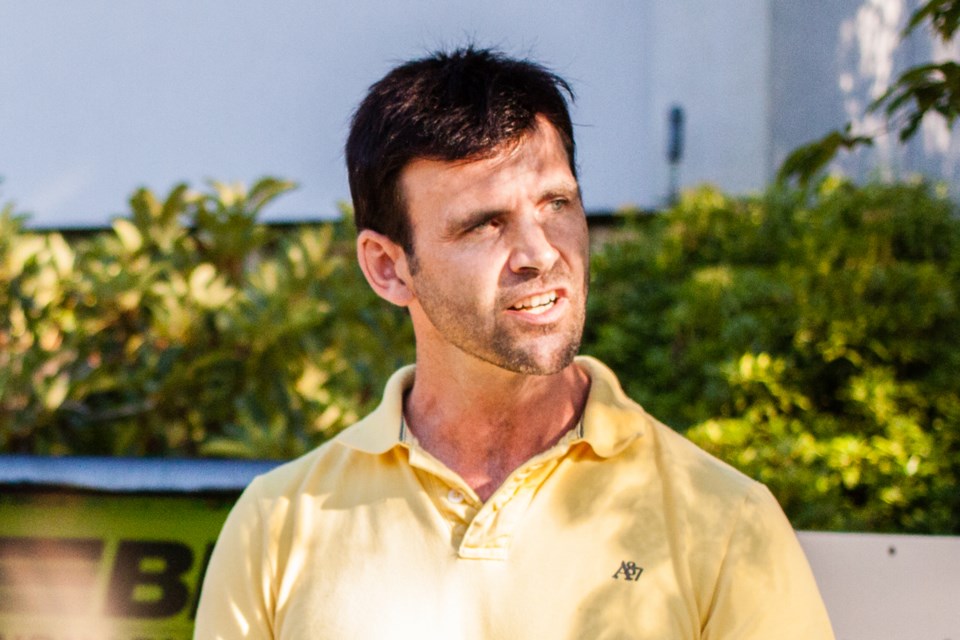The proposed two-tower “Gold House” development in Metrotown was met with opposition from Burnaby First supporters at the city’s latest public hearing.
On Tuesday, former Green Party candidate Rick McGowan and former Parents’ Voice schoolboard candidate Helen Ward questioned the rezoning application for two highrises – one 41 storeys, the other 26 – on Beresford between Cassie and McKay avenues.
While the northern half of the rectangular site is designated for high-density land use, the southern half is meant for medium density, prompting McGowan to question how a highrise apartment building could be built on the bottom portion of the site.
“My concern is, if you put a second tower behind the first tower, that is going to set a precedent for the existing towers… that they will see this as an opportunity to rezone behind those tall towers and build a secondary tower behind it in a north-south orientation,” he said.
Ward asked about the timeframe for a review of the town centre plan, which was recommended in 2010 and has yet to be done, to which planning and building director Lou Pelletier estimated the review would be done in about two years.
Ward stated that by looking at the application before designating the medium-density portion for high-density development, the city was “putting the cart before the horse.”
“How many towers are we going to build before we even approve the density changes as a community?” she asked. “Burnaby’s getting a reputation; back in 2012, there was a Globe & Mail article…that quotes a number of developers…praising Burnaby for being faster and easier than Vancouver, as far as approving really large towers that we don’t see anywhere else.”
McGowan seconded Ward’s concerns and asked if an amendment to the town centre plan would be required before the development could be approved.
In an interview with the NOW, Ed Kozak, assistant director of current planning at the city, clarified that while the town centre map shows land designated for medium density on the site, the area has been intended for high-density development for decades.
“Any designation is considered a guideline – it relies on an underlying zoning district to define it much more clearly,” he said. “The map that was referred to at the public hearing is a generalized land use map for the town centre. It was not the plan.”
Kozak noted that the Metrotown plan from 1977 describes development along the Beresford corridor as transitioning to high density, so it’s not unusual for the developer to request rezoning from RM3 (meant for multi-family residential, lowrise developments) to a high-density comprehensive development.
“In this case, (the plan) happens to include a very long property that extends further to the south than, say, the Metro Place site did. There was never an intent for there to be a perfectly linear demarcation between what is low and highrise.”
He also cleared up some confusion regarding the placement of the towers on the site. While Pelletier noted at the public hearing that both buildings would fit in the high-density top half of the site, Kozak said the 26-storey building would be in the medium-density portion, essentially creating a transition from the existing lowrise buildings to the highrises along the corridor.
“This, being a very large site, generates a fair bit of residential square footage,” he said. “The intent here was to orient the vast majority of that to Beresford…(with a transition) to a much lower tower on the southern portion on the site, then ultimately to the lowrise multi-family that’s there today.”



